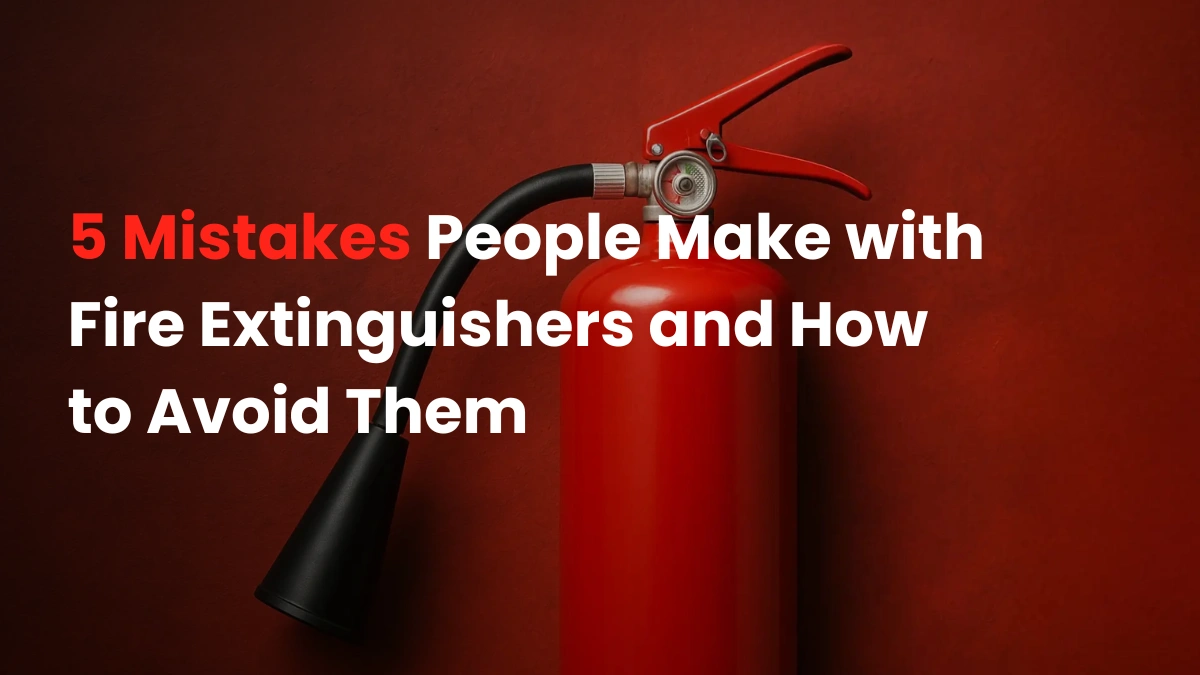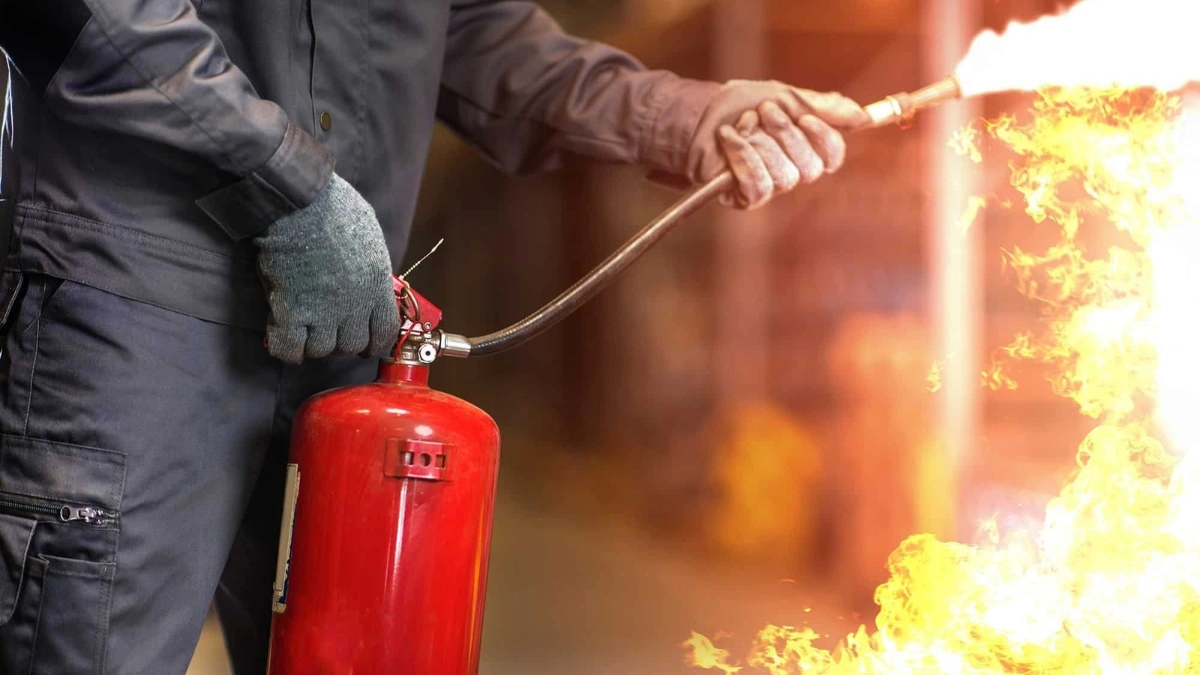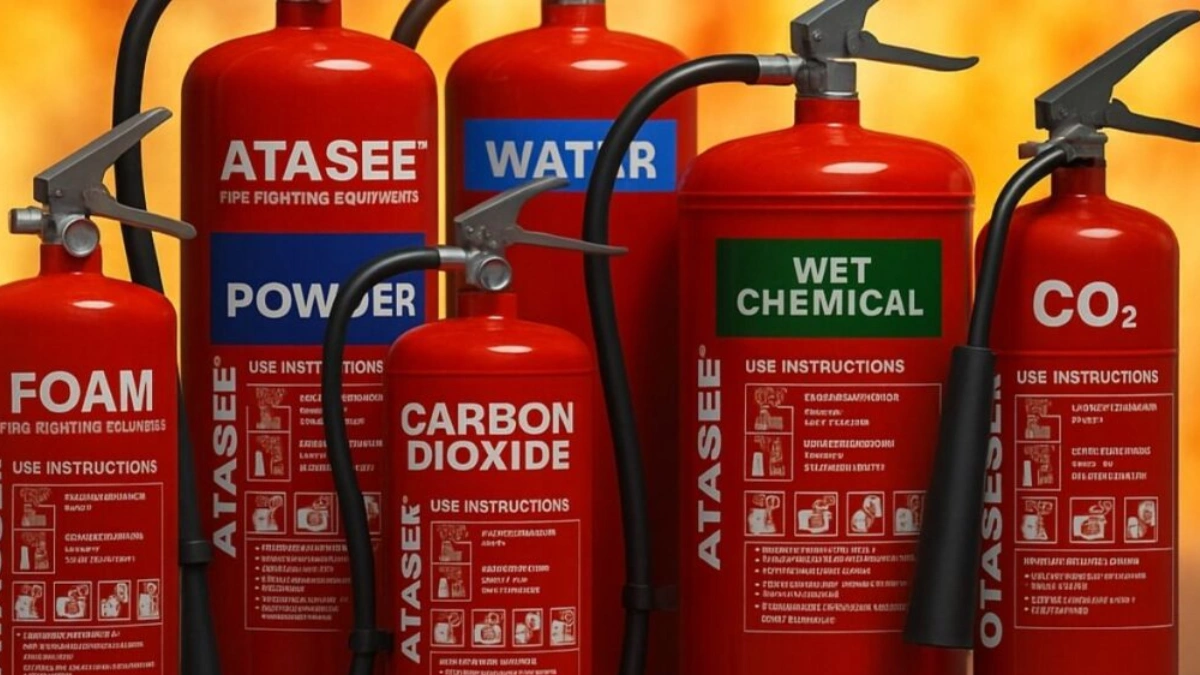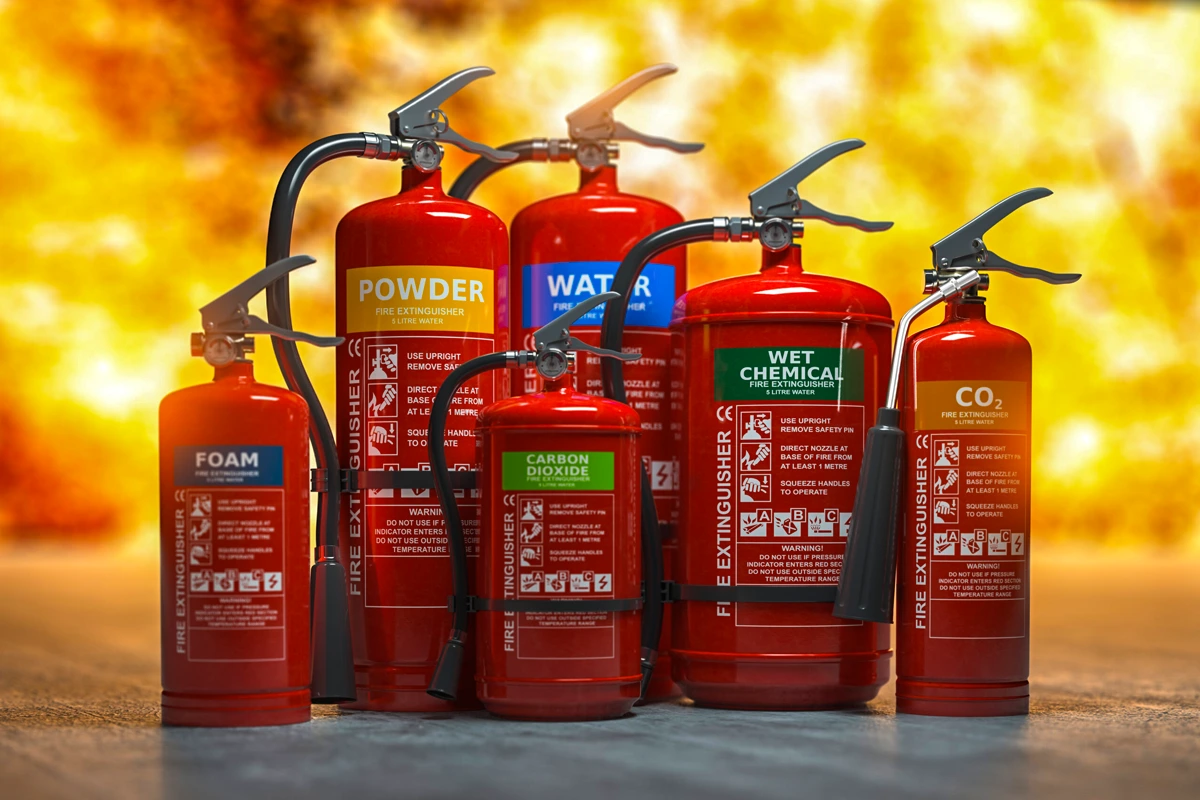
Imagine your safe space is suddenly facing a small fire. You rush to grab the fire extinguishers for defence, but freeze because you’re not sure how it works. Terrifying, right? In that split second, panic can turn a minor fire into a major disaster. And the truth is, most people have a fire extinguisher but don’t really know how to use it properly.
Some haven’t even checked if it still works. Do you even know that approximately 70% of the population has never actually received hands-on fire extinguisher training, according to the National Fire Protection Association (NPS)? It’s true. And honestly, we understand life’s busy, and fire safety isn’t always top of mind.
Don’t let this happen to anyone. That’s why we come with a simple guide on the “Common 5 Mistakes People Make with Fire Extinguishers and How to Avoid Them.”
Top 5 Common Fire Extinguisher Mistakes You Should Avoid
A fire extinguisher is one of the simplest and smartest investments you can make in your home or workplace safe and one day you’ll be thankful for it if disaster strikes. But what if you don’t follow the right steps during emergencies? To help you stay right prepared, here are the top 5 Mistakes People Make with Fire Extinguishers and How to Avoid Them:
1. Not Having A Fire Safety Tool
Yes, that’s true. You may wonder, but according to safety studies in the U.S and Europe, nearly 30% to 40% of homes do not have a fire extinguisher at all. In parts of India, the number is even higher. Why? Because people still believe “It won’t happen to me” and “it’s only for commercial use.” But we often forget “Fire safety isn’t an option — it’s a responsibility”.
How To Avoid It?
- Get the right type of fire extinguisher, such as the Atasee manufactured fire safety tool.
- Place it where it is needed, such as the garage, kitchen, or storage room.
- Teach everyone how to use it.
2. Not Knowing How to Use a Fire Safety Tool
The next mistake is that, in every place, people often keep a fire extinguisher, but hardly know how to use it. This is a serious mistake, and if you can never practice it can mean the difference between putting out a fire and making it worse.
Even most people forget to pull a pin, which will waste precious seconds. Ensure that to familiarize yourself and your family member (including 13+ teenagers) with the fire extinguisher before using it.
How to Avoid it?
- Learn PASS techniques (Pull, Aim, Squeeze, and Sweep)
- Try to practice on a demo unit if available.
- Don’t forget to read the label instructions ahead of time.
3. Using the Wrong Type of Extinguisher
“Cheap things often come with costly surprises.” When it comes to fire safety, buying the wrong type of fire extinguisher can be a serious mistake. After all, what’s the point of having one if it can’t protect you in a real emergency? For a reliable and affordable choice, we highly recommend Atasee-manufactured fire extinguishers because they come with a low price and ensure you’re never unprepared when it matters most.
How to Avoid this Serious Mistake?
- Class A – High-quality Paper/wood
- Class B – Best Flammable liquids
- Class C – Electrical
- Class K – Proper Kitchen/grease fires
4. Skipping Fire Extinguisher Maintenance
It is counted among the common 5 Mistakes People Make with Fire Extinguishers: we keep Fire safety equipment but ignore regular maintenance. After some time, your extinguishers can lose pressure, expire, or get damaged. Remember, “ a non-functional extinguisher is as good as no extinguisher,” until it’s too late. Follow these crucial tips to avoid big mistakes.
How to Avoid Mistakes People Make with Fire Extinguishers?
- Always check the pressure gauge monthly.
- Have a Look for signs of damage such as rust, leaks, or a broken seal.
- Get it professionally inspected once a year to avoid emergencies.
5. Fire Safety Poor Placement = Delayed Response
Another common mistake people make with fire extinguishers is poor placement. Guys, your fire safety tool is pointless if you can’t access it during an emergency. Shockingly, only 30% of people keep their fire extinguishers visible and easy to reach. The rest? They’re often tucked behind furniture, inside locked cabinets, or placed in far-off corners.
How to Avoid Them?
- Place it in visible and accessible areas.
- Mount them at the right height like 3 to 5 feet.
- Avoid blocking them with a curtain or furniture.
Fire Extinguisher Maintenance Schedule: What to Check and When
| Task | Frequency |
| Check the pressure gauge | Month |
| Inspect for physical damage | Monthly |
| Shake/dust off (dry powder type) | Quarterly |
| Professional servicing | Every 1–2 years |
| Full replacement (if expired) | Every 5–10 years |
Safety Tips: What to Do If You Don’t Have a Fire Extinguisher?

- Think clearly and act quickly.
- Immediately alert everyone.
- Place Atasse manufactured fire alarms for the home and office.
- It is advised never to use water or grease or electrical fires.
- Avoid water on certain fires because it makes grease fires.
- If the fire spreads, leave the location immediately.
- Close doors to help contain the fire.
- Dial 101 or 112 in India for a fire emergency.
- Never re-enter in burning building.
Atasee Top Third-Party Fire Extinguisher Manufacturer and Supplier in India

Atasee is proudly counted among the top 5 fire extinguisher manufacturers and suppliers in India. As an ISO-certified and reputable company, we never negotiate on quality because “your safety is our top priority”. Our experts, including prominent engineers and contractors of firefighting and Security systems, source all raw materials such as corrosion-resistant metals, reliable valve systems, accurate pressure gauges, and sturdy handles, only from trusted suppliers in the market.
Besides manufacturing, we offer a wide range of essential services such as fire extinguisher refilling, fire extinguisher installation, inspection of fire extinguishers, and AMC.
In addition, every equipment, such as fire extinguishers, fire Alarm systems, hydrant systems, and security signage, is produced in a GMP-certified manufacturing unit to ensure the highest standards of safety, quality, consistency, and performance.
Top Quality Packaging
Our expert team implements advanced packaging techniques to avoid damage and leakage during delivery. It is mandatory to maintain complete product integrity and safety.
Highly Experienced Manufacturer
Further, the company has gathered enough experience since its establishment. It knows the ups and downs of the industry and prepares relevant products as per customer and market demands.
Best Prices on Bulk Orders
It discloses a transparent and pocket-friendly price policy for its entire product range of fire safety tools.
On Time Delivery
We guarantee that all ordered fire safety tool stocks are delivered on time. Moreover, we offer manufacturing services all over India.
Strict Quality Check
Our Quality Analysts team strictly checks the quality of the products from the procurement stage until the final shipment in order to scrutinize the entire range to avoid any kind of damage.
People Also Ask
Which company manufactured a high-quality Fire extinguisher?
Atasee ranked one of the Best Fire extinguisher manufacturing companies in India because of high-quality and trusted equipment, a wide range of fire safety tools, affordable prices, and clear instructions.
What are the advantages of Getting Manufacturing Services from Atasee?
Backed by an Experienced Technical Team
Maintain efficient production workflows
Follow ethical business practices
On-time delivery
How do I use a fire extinguisher properly?
Never forget the PASS (Pull, Aim, Squeeze, and Sweep) technique:
Pull the pin: unlock your equipment and discharge it.
Aim at the base of the fire: Direct the nozzle at the source of the flame.
Squeeze the handle: firmly squeeze to release.
Sweep from side to side: move the nozzle from side to side.
What should I do after using a fire extinguisher?
Hey users, always check fire is completely out from the location to avoid danger, and after that, ventilate the area. Don’t forget to replace and recharge the extinguisher.
Can fire extinguishers expire after 1 year?
No, most fire safety tools have a lifespan of 5 to 15 years. Always check the manufacture or expiry date on the label. If you are in doubt, replace it immediately.
Which are the top emergency locations where I should place a fire extinguisher?
Always place it in visible and accessible areas such as the kitchen, mounted on walls, near exits, or entrances, and garage or workshop.
Conclusion
Yes, fire safety is extremely important because “Time is unpredictable”, and that’s exactly why using a reliable fire extinguisher matters. In 2025, Indian people increasingly prefer Atasee-manufactured fire extinguishers for their trusted reputation in the market. At Atasee, we believe in the principle, “Prevention is better than cure.” We provide complete fire safety solutions tailored for real-life emergencies.
Our experienced team plans, designs, and produces a wide range of high-performance safety products, including fire extinguishers, fire alarm panels, gas leakage detectors, hooters, industrial sirens, public addressable systems, exit lights, emergency lighting, anti-theft systems, and electrical panels.
Each product is carefully tested under strict R&D conditions before reaching the market. Moreover, to make safety more accessible, all our equipment comes with clear instructions and visible safety labelling because quick understanding can save lives.
Stay Safe. Stay Prepared. Trust Atasee.
Join thousands of satisfied customers across India who count on Atasee for their fire safety tools. Whether you’re a homeowner, a small business owner, or an industrial buyer—we’ve got your back.
Ready to Order?
Visit: https://ataseefire.com/shop/
Need Help Choosing the Right Extinguisher?
Call our Safety Expert: +91 94172 77276
Or email us: ataseefireindutries@gmail.com


